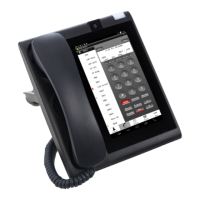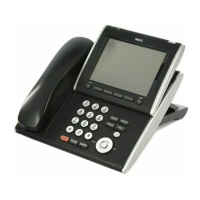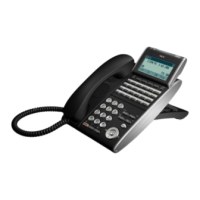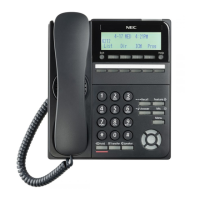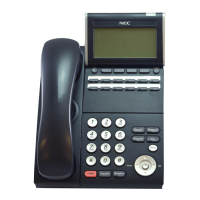Customize
System Options: [General 1]
460 ◆ Chapter 3: Programming UX Mail Manual
● All (All incoming network calls are accepted).
● Selected (Network Site Restriction is enabled — only some calls are allowed. See above.)
Default
✔ None (Incoming network calls are not accepted).
[General 1] Default Bilingual Mode
Use this option to set the system voice prompt language. Your choices are English (1) (English mnemonic)
and English (2) (English numeric), unless the System Administrator has substituted French or Spanish for
one (or both) of these default languages.
●
This option applies only to voice mail’s prerecorded voice prompts. If you intend to record a customized
Welcome Message and Instruction menu, consider recording it in the language specified by this option.
● This setting does not determine the default language for new mailboxes. Refer to mailbox program-
ming instead.
Options
● Choose one of 2 language choices.
● Normally, the options are:
English (1) - English mnemonic.
English (2) - English numeric.
Default
✔ English (1)
This is English mnemonic.
[General 1] Intertenant Messaging
Use this option to enable or disable inter-tenant messaging. If enabled, all messaging and routing capabilities
are available to all members of all tenant groups. If disabled, messaging and routing is prevented across ten-
ant groups. For example, an Automated Attendant caller answered by a Call Routing Mailbox in tenant
group 1 cannot dial an extension in any other tenant group.
● Intertenant Messaging applies to all voice mail ports and to the following mailbox types:
- Announcement
- Call Routing
- Directory Dialing
- Distribution
-Guest
- Interactive
- Message Center
- Subscriber
-Trunk
● See TENANT SERVICE (PAGE 287) for more.
Options
● Yes or No.
Default
✔ No.
[General 1] Number of Tenants
Use this option to enter the number of separate tenants (tenant groups) voice mail should support.
● See TENANT SERVICE (PAGE 287) for more.
Options
● 1-4 (Tenants 1-4)
Default
✔ 1 (Voice mail has a single tenant group).

